With its 1curiosity, People Co. continues to expand its presence in the global market, bringing its unique approach to toy design to children and families around the world.
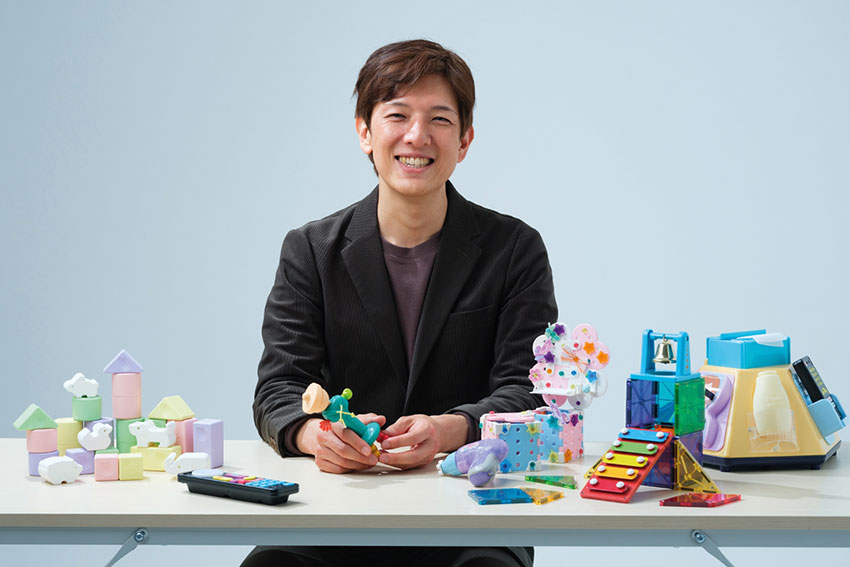
Japan has a long tradition of toy-making that fuses artistry, craftsmanship, and innovation, earning a global reputation for precision and creativity. Japanese toys often incorporate storytelling and cultural influences, seamlessly blending tradition with modern ingenuity. This unique approach continues to captivate audiences worldwide through exceptional quality, meticulous attention to detail, and distinctive design philosophies. How would you define the uniqueness of Japanese toys and puzzles? What do you see as their main strengths in providing both education and entertainment?
We specialize in toys for children aged zero to three years old, so I’d like to focus on this category first. One defining aspect of Japanese toy culture is that, since the high economic growth period of the 1980s. At that time in Japan, it was common for mothers to handle both housework and childcare on their own. While mothers were doing housework, they could let their children play with toys, allowing both to engage in their respective activities in a positive way.
Since our establishment, we have developed products based on the belief that the most enjoyable toys for children are those that satisfy their spontaneous curiosity and interest. We believe that fully engaging with such toys is beneficial for children's development. These toys are specifically designed to encourage independent play, allowing children to engage with them on their own while their parents tend to other tasks.
In Japan, there is a unique market specializing in toys for zero-to-two-year-olds, driven by a high level of parental interest in this age group. A key reason for this is that, 40 years ago, People developed a specialized toy for one-year-olds, inspired by the simple act of pulling tissues from a tissue box. We observed that young children are naturally drawn to this activity, purely out of curiosity. In response, we created a toy that allows babies to engage in this kind of repetitive, exploratory play to their heart’s content. This innovation not only contributed to the growth of the infant and toddler toy market but also helped define it. The product has remained popular for four decades.
This toy, called Yaritai Houdai (which translates to "Do Whatever You Want"), has been a bestseller for 40 years. Its success lies in its ability to actualize the kind of play that children naturally want to engage in. It also helps visualize what one-year-olds are capable of doing independently, allowing mothers to observe firsthand what excites and engages their child.
In summary, Japanese intellectual toys are the result of extensive research and development, designed to support children’s natural curiosity, enhance their abilities, and assist parents at home. By aligning with the instinctual ways young children explore the world, these toys continue to play a valuable role in early childhood development.
Your company’s 1curiosity initiative is dedicated to crafting toys that spark natural curiosity, extend engagement time, and foster independent exploration through thoughtful design and scientific observation. With flagship products Nook, Carousel, and Lantern, the brand captivates one-year-olds, encouraging open-ended play and supporting early developmental growth through sensory-rich, interactive experiences.
How does the 1curiosity initiative align with your company’s mission to nurture children’s curiosity? How do Nook, Carousel, and Lantern uniquely support early development and encourage open-ended play?
Our mission is to foster every child’s curiosity and fulfill that curiosity through toys. We aim to create the initial spark that ignites a child’s sense of wonder and provide them with the tools to explore and discover. We believe that by nurturing curiosity in this way, we can contribute to the happiness of children and families while also supporting healthy childhood development.
We believe that curiosity is deeply connected to a child’s natural desire to grow. For example, infants often start by licking their fingers, an instinctive action that helps them understand their own body and what they can do with their hands. From there, they move to the next stage of exploration, trying new actions that further their development.
Through play, children engage with the world, and their desire to grow is closely linked to their curiosity, which is realized through these playful experiences. If a child’s need to explore and discover isn’t met through play, their development may be hindered. That’s why we believe children should be encouraged to play as much as they want, especially during the critical zero-to-three-year-old stage.
1curiosity is designed around this philosophy, ensuring that our toys support this natural growth process by helping children actualize their curiosity and take meaningful developmental steps through play.
Unlike traditional toys, the 1curiosity lineup takes an abstract approach rather than directly replicating real-world objects. How does this design philosophy enhance a child’s engagement, creativity, and exploration?
I believe there are two key benefits to making our 1curiosity products more abstract in shape.
First, 1curiosity is designed as a global project, where we apply our child observation and co-development approach—a method we’ve refined in Japan—to non-Japanese markets. We wanted to see if this approach, which involves carefully studying how children interact with toys, would be effective worldwide. To achieve this, we needed to pursue a universal design that could be easily understood and enjoyed by children of all cultures and ages.
For example, in Japan, tissues typically come in a standard box, but in other countries, they may come in different packaging, such as a soft pack without a box. The size, design, and shape of tissue packaging vary from country to country, but what we found is that the behaviour of pulling out tissues is universal—children everywhere enjoy this action.
To adapt our design for different markets, we made small but critical adjustments, such as modifying the force needed to pull out the tissues and accommodating different finger shapes and sizes. These subtle refinements ensure that our products feel natural and engaging for children worldwide, making them more accessible and enjoyable across different cultural contexts.
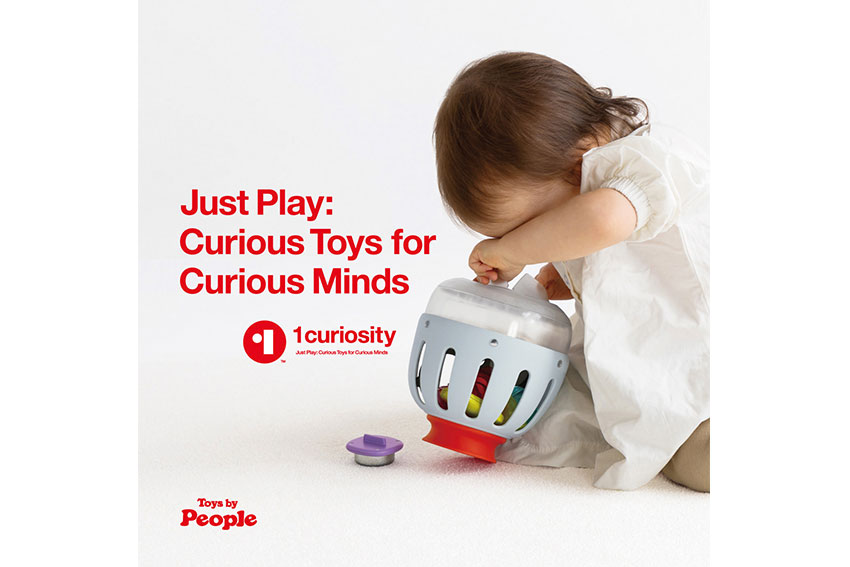
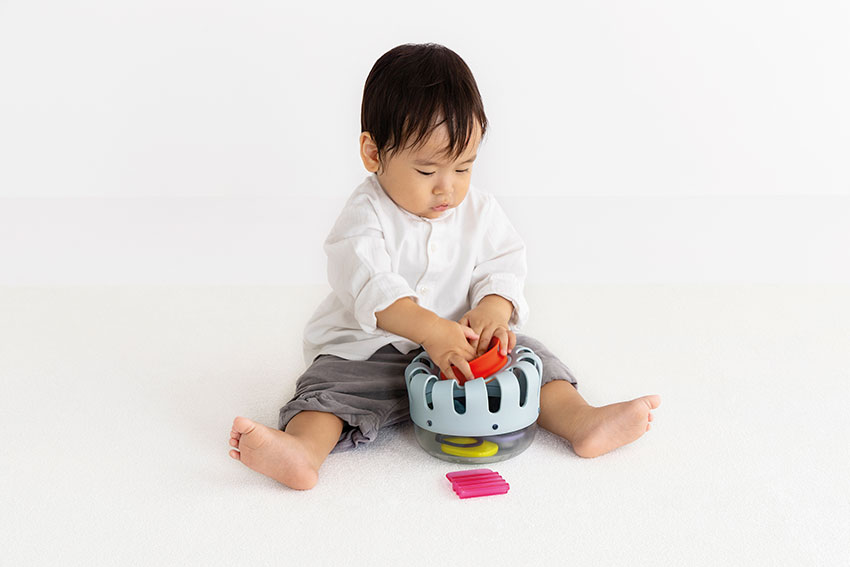
Research shows that children typically engage with toys for an average of just five minutes, yet the 1curiosity project has challenged this norm. Your recent studies indicate that children play with these toys for 45 minutes to an hour—a significant increase. What specific features or design elements contribute to this remarkable engagement?
Our 1curiosity products may appear abstract in design, but to children, they feel real and meaningful. This abstraction is intentional— Our 1curiosity products may appear abstract in design, but to children, they feel real and meaningful. This abstraction is intentional—it not only allows the toys to be universally accepted across different cultures but also stimulates children's imagination, encouraging them to interpret and engage with the toys in their own unique ways.
Children naturally try to make sense of objects based on their own life experiences. When they see our toys, they assign meaning to them and begin playing in a way that aligns with their interpretation. Unlike traditional toys, which often dictate a specific way to play, 1curiosity toys empower children to create their own play experiences, making them more engaging for much longer periods. We intentionally avoid defining how these toys should be played with, allowing children’s imagination and curiosity to take the lead.
By keeping the design abstract, children can freely interpret what it is and how to play with it during their playtime. For example, while adults might only see a shape with two circles as "glasses," children may imagine it as a spoon, a platform for arranging objects, or even combine it with other parts in various ways. This approach encourages more open-ended play, allowing children to experiment and develop their own unique ways of interacting with the toys.
There are two key aspects of a one-year-old’s curiosity. One is the curiosity driven by the desire to gain knowledge and skills, which pushes children to explore and learn through hands-on experiences. The other is the curiosity driven by imitation, as young children are naturally drawn to observing and mimicking adults, replicating real-world actions they see around them.
These two forms of curiosity interact as children experiment and engage in trial-and-error play. By satisfying both of these natural instincts, 1curiosity toys keep children engaged for significantly longer playtimes compared to traditional toys.
In 2025, we are fully immersed in the digital era, with parents frequently giving their children smartphones and tablets to keep them engaged. However, toys like 1curiosity challenge this growing norm by encouraging hands-on discovery and ensuring that physical play continues to provide essential developmental benefits. With the increasing prevalence of digital play, how do you ensure that 1curiosity remains engaging and relevant for modern children?
Children, especially one-year-olds, are naturally drawn to touching objects and imitating adults. This curiosity is both fascinating and endearing, and we aim to support and nurture it through our toys.
With the increasing presence of digital products, it’s natural for children to be curious about them as well. We believe that to truly engage and satisfy a child’s curiosity, we must continue researching both physical and digital play. For a one-year-old, there is no inherent distinction between digital and physical toys—they both involve the movement of their fingers and engage their senses in similar ways. From their perspective, these experiences are equally stimulating, and we want to embrace and evolve alongside this natural curiosity.
At 1curiosity, and within People as a whole, our approach is rooted in observing the emotions, behaviors, and instincts of one-year-olds, rather than imposing an adult perspective on play. Our focus is always on understanding what truly captivates and engages young children, allowing us to create toys that resonate with their natural curiosity and developmental needs.
A well-designed toy must satisfy three key aspects: visual appeal, sensory richness, and safety. What specific materials or technologies are used in 1curiosity to enhance engagement, create visually appealing designs, and ensure the highest level of safety for children?
When selecting materials for our products, safety is our top priority, especially because one-year-olds often play in ways that adults might not anticipate. We carefully consider every detail of the materials we use to ensure that our toys can be enjoyed without limitations, meaning they must be able to withstand any type of play while remaining completely safe for children.
While safety is essential, we also focus on making toys that are engaging and entertaining. One of the key materials we use is silicone, chosen for its exceptional safety and unique tactile experience. Soft yet durable, silicone provides a gentle, pleasant texture that enhances sensory exploration, making it particularly well-suited for young children. Its flexibility ensures a safe play experience while also inviting touch-based interaction, which is essential for early development.
In addition to silicone, we carefully select materials that contribute to a rich sensory experience, engaging children through touch, sound, and visual appeal. Different textures, weights, and surface finishes encourage curiosity-driven exploration, helping children develop their motor skills and sensory awareness.
Among these materials, we also use acrylonitrile butadiene styrene (ABS) plastic, valued for its strength and lightweight properties. This makes it easy for small hands to grasp and manipulate while also producing a satisfying sound when tapped against a surface. Additionally, ABS plastic allows us to create toys in vivid, eye-catching colors, further enhancing their visual appeal and engagement potential.
Different materials offer unique textures and sensory experiences. Some are soft, while others are firm, and factors like temperature, weight, and reflectiveness can stimulate a child's imagination and tactile exploration. Because of this, we continuously research the optimal ways to incorporate various materials into our designs.
Materials also play a crucial role in how children interact with our toys. For example, in toys where children pull objects from inside a structure, we carefully design the resistance force to ensure they feel a satisfying level of tension while pulling. Additionally, if the toy changes shape when interacted with, we might use silicone, which is soft and safe—especially if a child inserts their arm into the toy. We aim to create toys that can be enjoyed in a thousand different ways, which is why we have been incorporating silicone more frequently into our designs.
Among Nook, Lantern, and Carousel, which one is your favourite, and what makes it special to you?
Among all our toys, Lantern truly stands out. With its unique combination of transparent parts and soft silicone, it has received fantastic reactions in our monitor tests, earning top marks from experts as a highly recommended toy for 1-year-olds. We recently exhibited at the Childcare & Education EXPO in London, where we introduced our products to a large audience for the first time. The overwhelming response and positive feedback far exceeded our expectations, giving us great confidence. Lantern, in particular, captivated visitors with its fresh and innovative design, and I was thrilled to see people—adults included!—instinctively reaching in to interact with it. That moment made me certain that Lantern will be our most popular product.
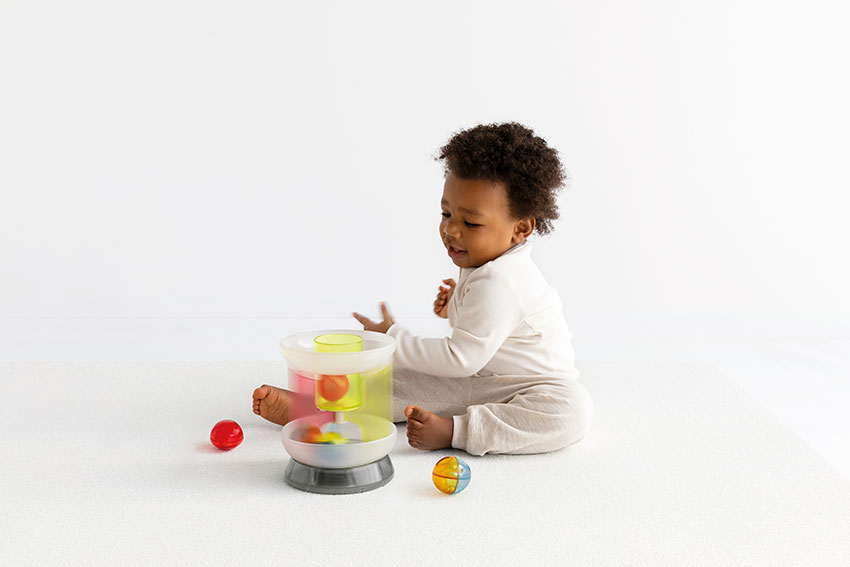
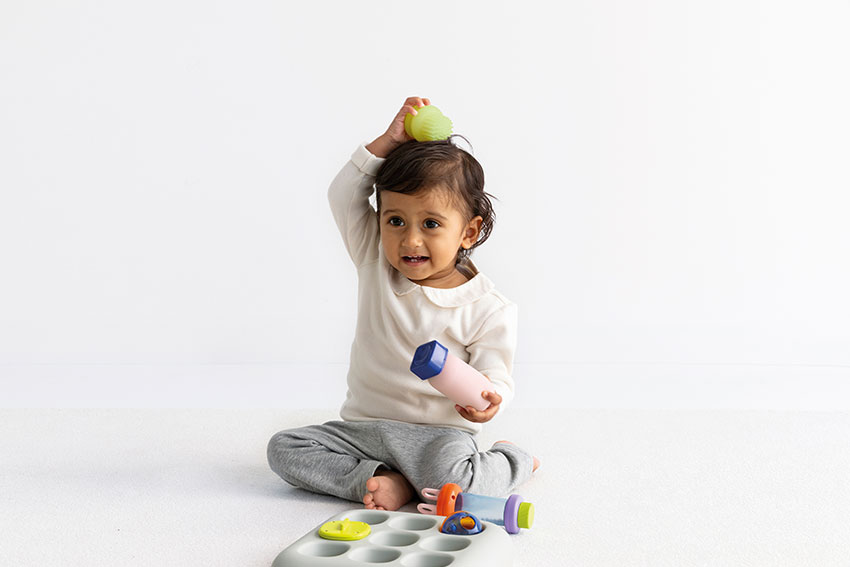
1curiosity is set to have a lasting impact on early childhood toy design, encouraging deep engagement, independent exploration, and a love for discovery in one-year-old children. When you think about the future, what kind of legacy do you hope 1curiosity will leave in the world of early childhood education and toys?
I believe the mission of 1curiosity is deeply aligned with the mission of parents. Since our founding, we have strived to ignite children's curiosity, supporting their natural desire to grow and develop. I see this as the greatest value we can offer to our customers.
At the heart of our philosophy is enriching children's imagination. We recognize that each child interprets and interacts with a toy differently, which is why we avoid designs that limit play to a single function. A toy that only offers one way to play restricts a child's imagination and creativity, which goes against our goal of expanding their potential. By designing open-ended toys, we aim to maximize children's ability to explore, create, and discover.
If we define education as adults providing structured input to children, then I believe education is not necessary for children aged zero to two. At this stage, curiosity itself is the driving force behind development. When given the right triggers, children naturally express and act upon their curiosity—this self-driven exploration is what truly fosters growth.
Parents often misinterpret certain curious behaviors as problematic, but in reality, these actions are simply a child expressing their curiosity. Part of our mission is to help parents recognize that these behaviors are natural and essential for development. As toy makers, we take pride in creating toys that serve as the catalyst for children's curiosity, enabling them to learn, explore, and grow in ways that are both meaningful and joyful.
When and where can consumers expect to find 1curiosity products available for purchase?
1curiosity products are scheduled to launch in retail stores across Japan, select stores in the UK, and our own e-commerce website starting in mid-May 2025. In June, we are also planning promotional activities in the UK, and we are actively seeking additional retail partners in the region.
Our plan is to gradually expand availability to other countries worldwide as part of our broader global rollout.
For more information, please visit their websites: Company website: https://www.people-kk.co.jp/global/ • 1Curiosity Website: https://uk.1curiosity.com/
0 COMMENTS